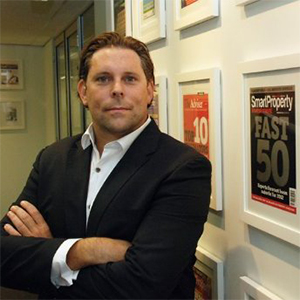BLOG: Why getting the best rate for your loan is complicated
If you’re currently a customer for a lender, you should always be asking your lender whether they’ve got the right rate for you, but in the end, it’s never easy.

The rate you have today with the lender might be a different rate in three months, six months, 12 months’ time, and you’re an existing customer.
So you need to go back to your lender and say, “Hang on a second, why aren’t I getting the same pricing as new customers?” Is that fair? It’s pretty close.
I like to keep things basic and simple.
There are a couple of things moving in unison to keep in mind, and that is number one: lenders can’t grow their loans from investors too quickly. And number two: they can only have so many IO loans on their books pretty much.
If banks or lenders are capped at a particular point and they already have current investor clients, they could just push the rates up on them because it’s going to potentially stop them buying other properties or moving elsewhere.
Alternatively, they can bring rates down for other areas if they want particular business there. As an investor, I can shift from being an IO to a P&I loan because there are no caps on P&I loans.
Therefore, they will offer better pricing to try and entice, cajole, whatever else people to go into those markets. If they could shift investors from IO to P&I, it means they could go back and get new customers on IO.
Now, the rationale for these recommendations and guidelines put in by APRA was to try and slow down rampant price growth in the market, and obviously Sydney and Melbourne have seen significant growth.
However, the market has changed a little bit in terms of investor appetite for property. There have been effects depending on the market of slowing down of price growth in some markets, a little bit negative, so in order to survive these changes, it’s important to rely on a mortgage broker.
If you don’t have a mortgage broker, get one. They help you out with this sort of stuff. Sit down with your mortgage broker and look at those pros and cons and that need to be filtered across or in view of what your wider strategy is.
Whatever you’re looking to do, it’s also important to think about whether you’re going to fix your loans or not. If you’re not going to do anything, it’s okay to fix because you’re not going to need access to the cash. But if you choose to be proactive in portfolio development and you need to drill down equity in terms of buying new property or building granny flats, it might not be the right solution or scenario for you.
If you’re going to change the type of loan, then you also need to be weary of break costs incurred. That’s when you say: “Mr Lender, thanks for three-year fixed rate. I’m two years in, I need some money now, I need a different home loan.” They go: “Sure, no problem. For you to break this mortgage is going to cost you X thousands of dollars.”
If you fix it at 4.5 and in three years’ time, variable rates are at 6 per cent, you can potentially have a 1.5 per cent jump in your interest rates at the end. You need to buffer that.
It’s actually quite complicated, this whole scenario in terms of whether to fix or stay variable because you don’t know what you don’t know.
You don’t know what the market’s going to do, you can’t control the market. You might be able to control what you choose to do with your property or property portfolio in two, three years’ time, but you can be restricted if you do fix.
It’s a little bit of risk in there because if you’re stowing variable, you can get the benefits of a variable rate which you hope is down but often it’s up again.
